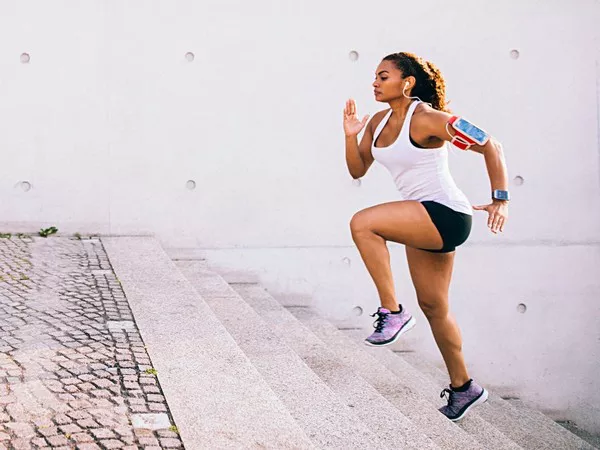Cardio exercises like running, cycling, and swimming are often considered the go-to methods for burning calories and losing fat. While these activities are undoubtedly effective, they’re not the only way to increase calorie burn. Many people struggle with the idea of doing cardio, either because of time constraints, physical limitations, or simply a lack of interest. The good news is that there are plenty of other ways to burn calories, build muscle, and boost metabolism without ever stepping on a treadmill or hitting the bike. In this article, we’ll explore several effective strategies for burning calories without cardio, from strength training to lifestyle habits, to help you achieve your fitness goals without the need for traditional cardiovascular exercise.
Calorie Burn and Metabolism
Before we dive into non-cardio methods for burning calories, it’s important to understand how calorie burn and metabolism work. Calories are units of energy that the body uses for all its functions, including breathing, digestion, and physical activity. The total number of calories you burn in a day is referred to as your Total Daily Energy Expenditure (TDEE). Your TDEE is made up of several components:
Basal Metabolic Rate (BMR): The number of calories your body burns at rest to maintain basic functions like breathing, circulating blood, and regulating body temperature.
Physical Activity: The calories burned through exercise, including both cardio and strength training.
Thermic Effect of Food (TEF): The energy required to digest, absorb, and metabolize food.
Non-Exercise Activity Thermogenesis (NEAT): The calories burned through activities that aren’t formal exercise, such as walking around the house, fidgeting, or even standing.
While cardio is a popular way to increase calorie burn, it’s important to recognize that both strength training and NEAT can contribute to significant calorie expenditure as well. Building muscle, staying active throughout the day, and using creative strategies can help you burn more calories without traditional cardio.
Strength Training for Calorie Burn
Strength training, often associated with building muscle and improving strength, is also a powerful way to burn calories. Contrary to the misconception that strength training only leads to muscle gain, it can also significantly boost your metabolism, which helps with fat loss.
1. The Afterburn Effect
One of the key benefits of strength training is the afterburn effect, also known as excess post-exercise oxygen consumption (EPOC). After a strength workout, your body continues to burn calories at an elevated rate for several hours, sometimes even up to 24-48 hours after the session. This means that the more intense and challenging your strength workout, the more calories your body will burn even when you’re resting.
When you engage in strength training, particularly exercises that target large muscle groups (such as squats, deadlifts, and bench presses), your body expends a large amount of energy. As your muscles repair and rebuild, they require more energy to function, which results in increased calorie expenditure.
2. Full-Body Workouts
One of the most effective ways to burn calories without cardio is to incorporate full-body strength training workouts. By targeting multiple muscle groups at once, you increase the overall intensity of your workout and, consequently, the number of calories burned. Compound movements like squats, lunges, push-ups, and rows engage multiple muscle groups, which elevates your heart rate and helps burn fat.
For example, performing a circuit that includes exercises like squats, deadlifts, pull-ups, and bench presses will keep your heart rate up and burn more calories than isolated exercises targeting just one muscle group. Full-body workouts also improve muscle coordination and endurance, which makes them a highly effective fat-burning strategy.
3. Lifting Heavy Weights
Lifting heavier weights with fewer repetitions (typically 4-8 reps per set) also burns more calories in a shorter amount of time. This is because heavy weight lifting requires greater energy expenditure to move the weight, and it recruits more muscle fibers, leading to greater muscle activation and calorie burn. If your goal is to burn calories and increase muscle mass, you should aim to progressively increase the amount of weight you lift over time.
Increasing NEAT (Non-Exercise Activity Thermogenesis)
Another effective way to burn calories without formal cardio is by increasing your daily NEAT, or Non-Exercise Activity Thermogenesis. NEAT includes all the calories you burn through movement that isn’t part of structured exercise. This could include walking around the house, standing instead of sitting, taking the stairs, or even fidgeting. While these activities may seem minor, they add up over the course of the day and contribute significantly to your total calorie burn.
1. Increase Daily Steps
Walking is one of the simplest and most effective ways to increase NEAT without the need for structured cardio sessions. Aim to increase your daily step count by parking farther away from your destination, taking the stairs instead of the elevator, or going for short walks throughout the day. Walking at a moderate pace can help you burn anywhere from 100 to 300 calories per hour, depending on your weight and pace.
In fact, walking 10,000 steps a day is a common target for people who want to stay active without formal cardio. By staying on your feet and moving throughout the day, you can burn a significant number of calories and improve your overall health without having to dedicate time to a cardio workout.
2. Stand More, Sit Less
Another way to increase NEAT is to stand more often throughout the day. Sitting for long periods is associated with a number of negative health outcomes, including weight gain, poor posture, and even increased risk for chronic diseases. By standing up frequently, you engage your muscles and promote better circulation, which helps burn more calories.
Consider using a standing desk, or take regular breaks to stand and move around. You can also do simple exercises like calf raises, squats, or stretching while standing to engage your muscles and keep your metabolism active.
3. Fidgeting and Movement
Even small movements like fidgeting, tapping your feet, or pacing around the room can contribute to calorie burn. People who tend to move more throughout the day, even in seemingly insignificant ways, burn more calories than those who are more sedentary. If you’re watching TV, consider doing some light stretches or movements like leg lifts or seated marches to keep your body active.
Yoga and Pilates for Calorie Burn
While yoga and Pilates are often thought of as low-impact exercises that focus on flexibility and core strength, they can also contribute to significant calorie burn, particularly when practiced with intensity and focus. Both activities engage multiple muscle groups, improve posture, and increase flexibility—all of which contribute to a more active and calorie-burning body.
1. Power Yoga
Power yoga, a faster-paced style of yoga, combines strength training and flexibility work. It involves dynamic, flowing movements that engage large muscle groups, including the core, arms, and legs. The continuous movement and holding of poses for extended periods of time can elevate your heart rate, leading to calorie burn. A typical power yoga session can burn anywhere from 200 to 400 calories, depending on the intensity.
2. Pilates
Pilates, like yoga, focuses on building core strength, flexibility, and muscle endurance. While Pilates is generally lower in intensity than cardio, it can still contribute to calorie burn. Certain Pilates exercises, such as leg circles, planks, and abdominal work, require a great deal of muscular engagement and can elevate your heart rate. By focusing on controlled movements, Pilates also enhances muscle tone, which can help boost metabolism and increase calorie burn over time.
Diet and Nutrition for Enhancing Calorie Burn
While exercise plays a key role in burning calories, nutrition also plays a critical role in boosting metabolism and enhancing fat loss. By focusing on foods that promote thermogenesis (the production of heat in the body), you can increase the number of calories you burn throughout the day.
1. Protein-Rich Foods
Protein is known to increase the thermic effect of food (TEF), which is the energy required to digest and metabolize food. Foods like lean meats, eggs, beans, and legumes require more energy to digest compared to carbohydrates or fats, leading to increased calorie burn. Additionally, protein helps build and repair muscle, which can further boost your metabolism and fat-burning potential.
2. Spicy Foods
Certain spices, such as cayenne pepper and chili, contain compounds like capsaicin that can temporarily increase your metabolism and promote calorie burn. Adding spicy ingredients to your meals can give your metabolism a slight boost and may help you burn more calories during digestion.
3. Green Tea and Coffee
Both green tea and coffee contain caffeine and antioxidants that can slightly increase calorie burn. Caffeine stimulates the central nervous system, which can elevate your heart rate and metabolism. Green tea, in particular, contains catechins, which have been shown to increase fat oxidation and calorie burn, especially when combined with exercise.
Conclusion
You don’t need to spend hours on the treadmill or perform intense cardio to burn calories and lose fat. By incorporating strength training, increasing your NEAT, engaging in activities like yoga or Pilates, and making small adjustments to your diet, you can effectively burn calories without traditional cardio. The key is to stay consistent, be mindful of your movement throughout the day, and combine these strategies with a healthy, balanced diet. Remember, small changes add up over time, and even without structured cardio, you can still achieve significant fat loss and improve your overall health.
Related Topics

































